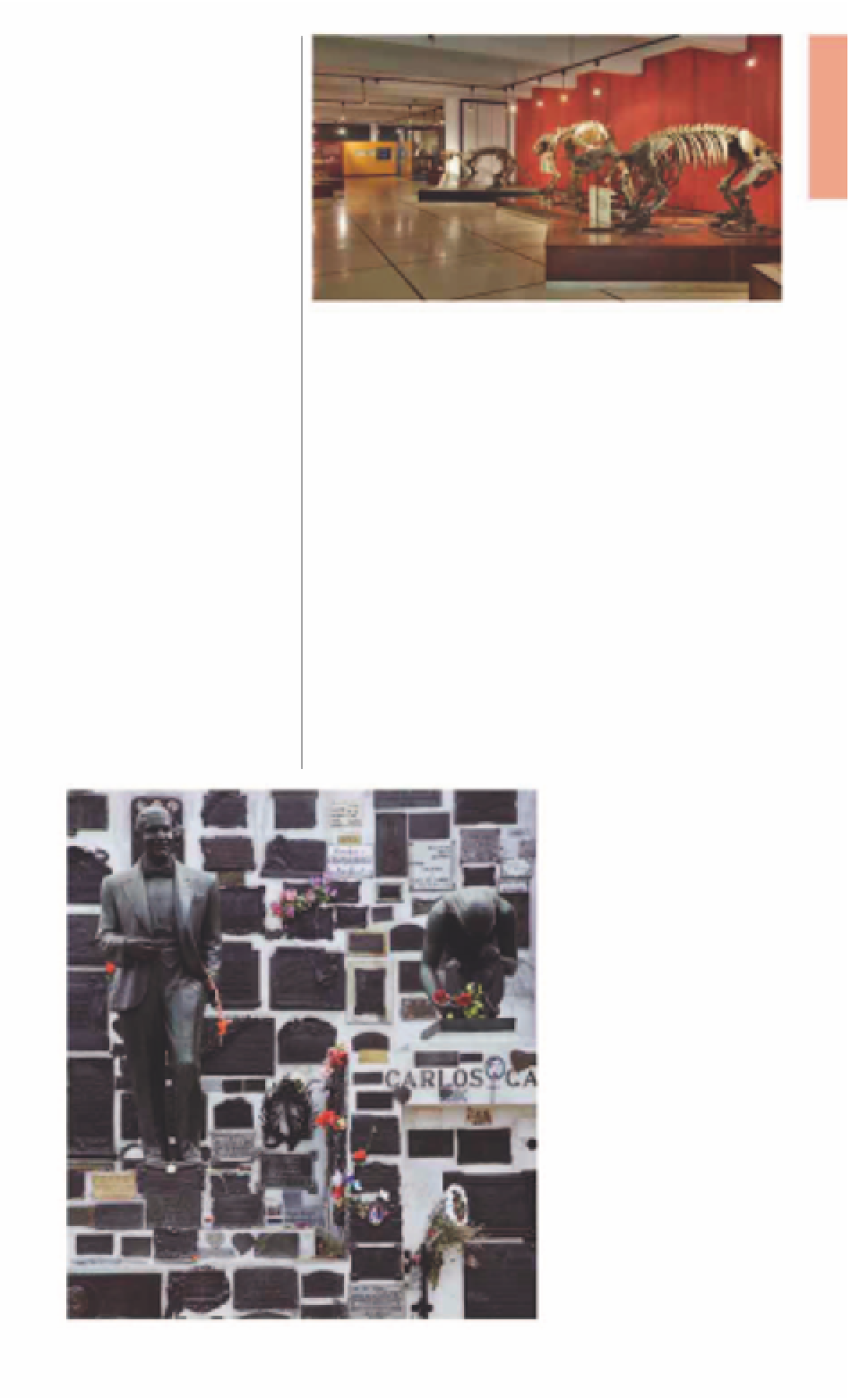Travel Reference
In-Depth Information
i
Cementerio de
la Chacarita
Ave Guzmán 680 & Federico Lacroze.
City Map
4 A4.
Te l
(011) 4553-9338.
Federico Lacroze.
@
39, 45, 71, 93.
Open
8am-6pm daily.
8
3pm, 2nd &
4th Sat.
7
Buenos Aires's largest cemetery,
though not its most famous or
aristocratic, was inaugurated in
the wake of the yellow fever
epidemic that swept the city in
1871. The plague was so severe
it was reported that 576 bodies
were buried at Cementerio
de la Chacarita during a single
day. Since then the necropolis
has expanded to 234 acres
(95 ha) and is now one of the
largest in the world. The
cemetery dominates the
neighborhood of Chacarita;
indeed it is almost a barrio in its
own right, having numbered
streets and convenient car
access. Burials of well-known
personalities often draw the
media and large crowds to
the cemetery. It is the final
resting place of many famous
Argentinians, though no longer
of Juan Perón, who used to be
buried here, but whose remains
were moved to a family
mausoleum in 2006.
The Dinosaur Room at Museo Argentino de Ciencias Naturales
o
Plaza Serrano
Calle Honduras & Borges.
City Map
5
D4.
@
15, 39, 110, 141, 168.
(
crafts
market Sat & Sun.
Officially named Plaza Cortázar,
Plaza Serrano is the focal point
of the fashionable area known
as Palermo Viejo or Palermo
Soho. Characterized by early
20th-century Spanish-style
architecture, this area was once
a residential barrio. It is now
packed with alternative bars
and restaurants serving global
cuisine. In the 1990s artists and
designers moved into the area
to take advantage of low rents,
a trend that created a flourish-
ing alternative scene after the
economic collapse in 2001.
Located to its north is the area
known as Palermo Hollywood,
which is now an upmarket
nightlife district.
p
Museo Argentino
de Ciencias
Naturales
Bernardino
Rivadavia
Ave Angel Gallardo 470.
Te l
(011)
4982-6595.
Angel Gallardo.
@
65,
97, 105, 112, 124.
Open
2-7pm daily.
&
8
Apr-Nov: Sat, Sun, & hols.
7
-
=
∑
macn.secyt.gov.ar
One of the oldest in the
country, this museum dates
back to 1823 and is the brain-
child of Argentina's first presi-
dent, Bernardino Rivadavia. In
1937, it moved to its current
venue, an Italianate building
specifically designed and
built to house the museum,
unusual in a city where most
museums were incorporated
into various existing structures.
There are over 15 large
exhibition spaces, each
devoted either to a class of
fauna or flora or to a habitat.
Fish, mammals, invertebrates,
and plant life are all covered,
and the squawks and whistles
of Argentinian birdlife can
be heard in the impressive
Sounds of Nature salon.
The star attraction of the
venue is the Dinosaur Room,
with its reconstructed
skeletons, mostly made using
bones unearthed in the
Patagonian region, where
the museum's team of
paleontolo gists conti nue
to carry out research.
The tomb of tango singer Carlos Gardel at Cementerio de la Chacarita




































